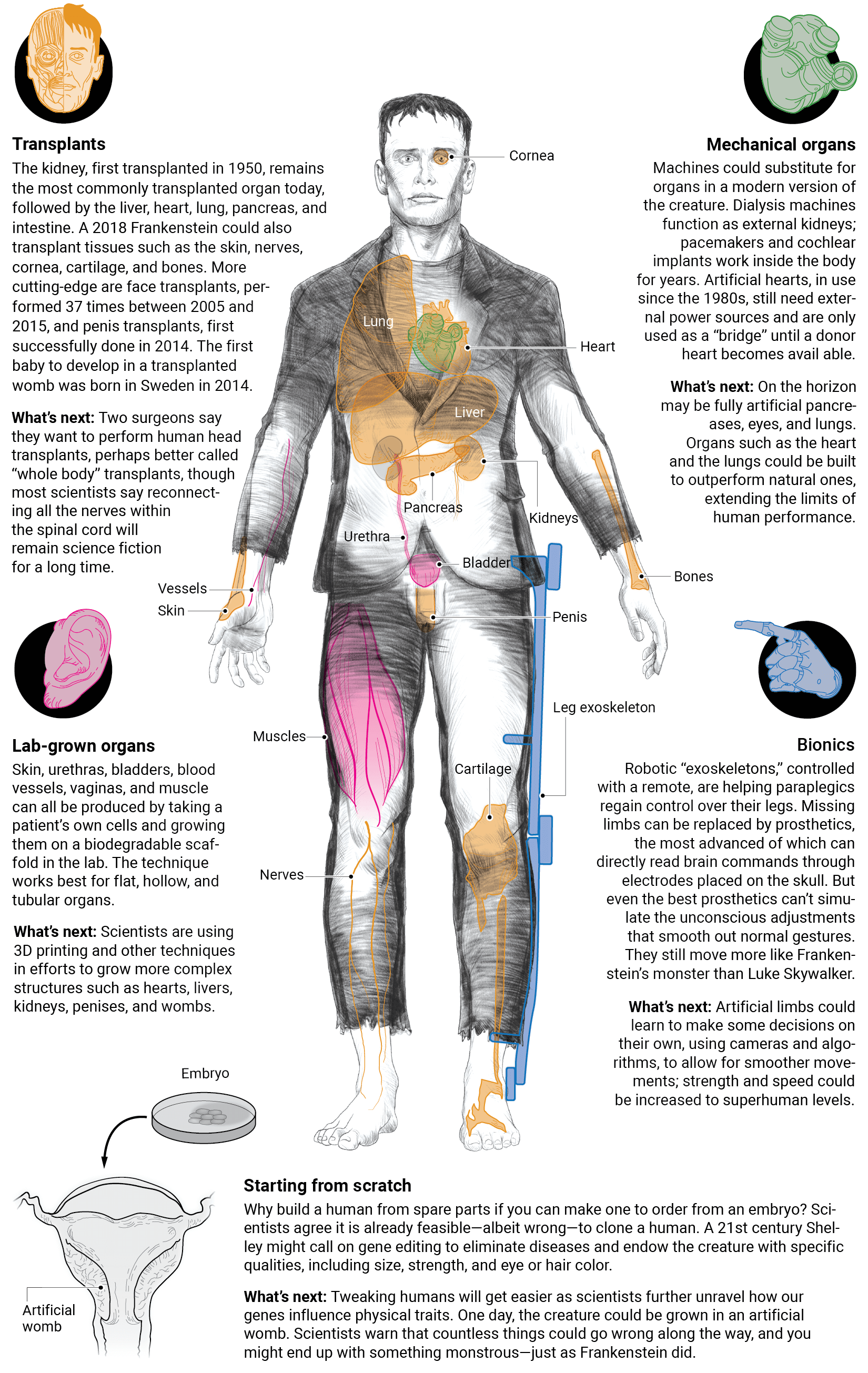On 1 August 1790, a precocious student named Victor Frankenstein submitted a radical proposal to an ethical panel at the University of Ingolstadt in Bavaria. Under the title “Electro-chemical Mechanisms of Animation,” Frankenstein explained how he wanted to “reverse the processes of death” by collecting “a large variety of human anatomical specimens” and putting them together to try and “restore life where it has been lost.”
…
Of course no such proposal ever went to bioethicists at the University of Ingolstadt, where the fictional Frankenstein created his monster…. But the proposal does exist in a 2014 paper, which speculates about whether the Frankenstein story would have had a happier ending if 21st century safeguards had existed 2 centuries ago.
…
But by far the bulk of the scientific literature hand-wrings, ponders, and philosophizes about the most familiar form of the Frankenstein myth…the idea that mad scientists playing God the creator will cause the entire human species to suffer eternal punishment for their trespasses and hubris.
…
J. Craig Venter, a pioneer in genomics based in San Diego, California, has been called a Frankenstein for his effort to create artificial bacteria with the smallest possible genomes.
…
The Frankenstein myth endures, he says, because “fear is easy to sell”—even when unwarranted. “Most people have a fear of what they don’t understand,” he says…But by throwing around labels like Frankenfood and Frankencells to rally the public against potentially valuable innovations, he says, the “fear-based community will potentially do more damage to humanity than the things they fear.”
Read full, original post: The horror story that haunts science
































